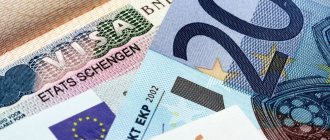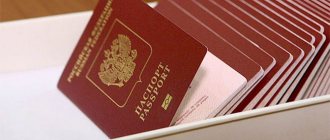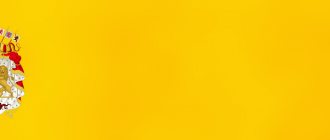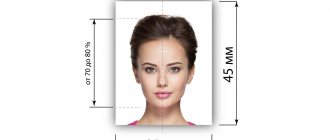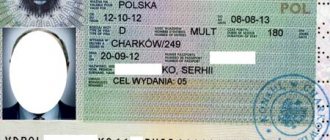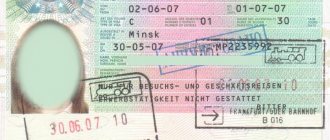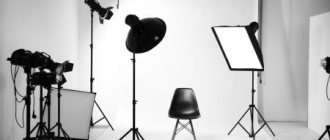If you are planning a trip to a European country that is part of the Schengen area, take care of obtaining a visa. The application procedure is simple, but it will take a little patience to collect all the documents and submit them with the application to the consulate. The application requires a Schengen photo, which must meet all the requirements. There is a certain standard for them, but each country makes amendments on this issue.
Do you want to get EU citizenship in 12 months? Take the free test and find out your chances.
General requirements
The Schengen photo for the application form must meet the parameters of the ICAO standard. It includes specific technical requirements used to guarantee safety. This applies to the regulation of processes in civil aviation. The Chicago Convention on this standard was adopted in the USA by 52 countries in 1944. A unified style has been defined for the documents and photographs listed in the table.
| Characteristic | Requirement |
| Age photo | Only a recent photograph taken no more than six months ago is accepted. |
| Appearance | Fractures, damage and stains are not allowed. |
| Quality | It is recommended to take professional photographs. Photos from a family album will not work. |
| Color spectrum | If the background is light, then the clothes should be dark. |
| Chroma | According to the standard, it is allowed to use black and white and color photographs. But the consulates of some states require only people of color. |
Attention! If you submit a photo of poor quality, there is a risk of not getting a visa to Europe.
In addition to the general rules listed, there are other photo requirements for a Schengen visa. They should be studied in order to correctly place an order in a photo studio. Even professional craftsmen sometimes make mistakes, so it’s better to check everything yourself.
Requirements for photo cards in other countries
Despite the existing standard, the consulates of individual countries have their own requirements for the preparation of questionnaires of foreign citizens and attached photographs.
US visa photo requirements
- image size 50 x 50 mm, resolution 600 x 600 – 1200 pixels;
- in electronic JPEG format the size is allowed up to 240 KB. Compression 20:1;
- in the photograph the face should occupy 50-70%;
- the eyes should be 56-65 mm in relation to the bottom border of the photo;
- The background must be light, maybe white.
China visa photo requirements
People's Republic of China. From January 1, 2021, the Chinese Consulate announced new photo requirements for a visa to China:
- size 35 X 45, the gap from the bridge of the nose to the chin in the image is 13 mm;
- the head should be 2 mm from the top border of the image;
- Only white background is allowed;
- the use of corners and ovals is prohibited;
- the collarbone and shoulder line are clearly visible;
- closed mouth; ears are visible; eyes are completely open;
- The frames on the glasses are transparent;
- prohibition of any jewelry;
- Open-face religious headdresses are acceptable.
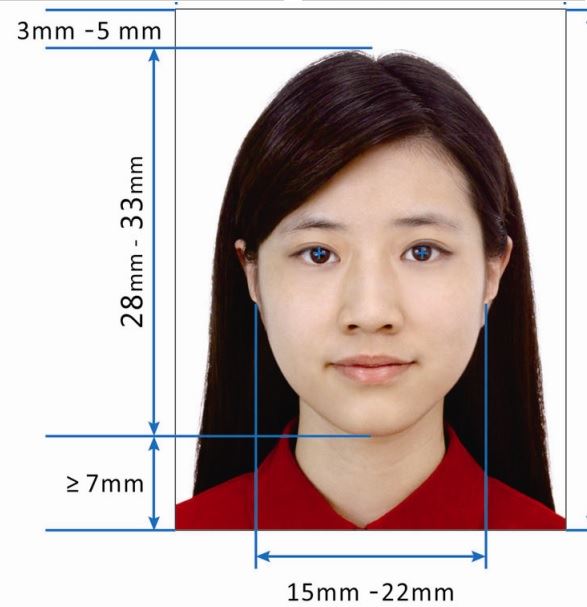
Photo requirements in Vietnam
For those applying for a visa to Vietnam, the photo requirements do not meet the standard in size and some other points:
- size 40 X 60 mm. In rare cases, photographs of 30 x 40 mm were allowed;
- it is necessary to take 2 color and 2 black and white matte photographs of high quality;
- the borders at the top should be at a distance of 3 mm from the head (a deviation of 1 mm is allowed);
- The crown should be located between 32-36 mm. Width from ear to ear 26 mm;
- the photo is relevant for no more than six months;
- the face should be open, hair neatly combed;
- a headdress as part of the applicant’s national or religious dress is acceptable;
- white and neutral background shades are allowed;
- damage to paper is not accepted;
- an image without tilting the head, with open eyes (bangs should be removed) and a closed mouth;
- the frame of the glasses is thin, does not hide the eyes, and is located at the same level;
- Jewelry and foreign objects are not allowed in the photo.
When a person applies for a visa after arriving at one of the international airports in Vietnam, photographs must immediately be pasted onto the application form!
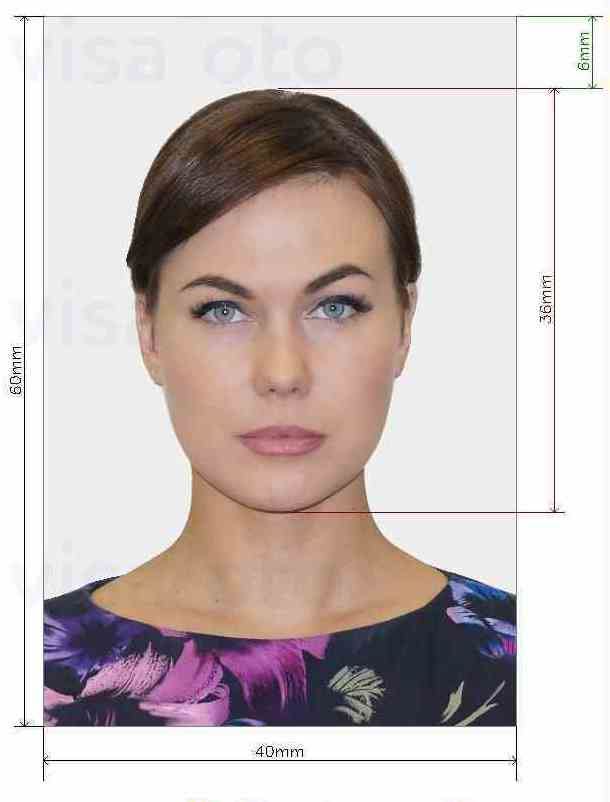
India visa photo
The conditions for a photograph for a visa to India are standard, absolutely identical to the requirements for Schengen registration. The only caveat is that the face can take up 70% of the space in the image.
You may be interested in: Schengen visa: changes, document requirements, cost
Photo for visa to Spain
for a visa to Spain are standard, except that a white background is allowed.
- the head should be strictly in the center of the image;
- the face occupy at least 3 cm of space and be visible from the top of the head to the chin;
- Both ears must be visible;
- The photograph must not be older than 6 months.
Image dimensions
Photo parameters that are especially taken into account for a Schengen visa are width, oval of the face, size of margins and indents. More specifically:
- The photo must be 3.5 cm wide.
- Height – 4.5 cm. Some countries are loyal to this issue and can accept photographs with a height of 4 cm. Their list includes Belgium, the Czech Republic, and Sweden.
- You need to make sure that the face occupies 70% of the area. It is recommended to set the distance from the chin to the top of the head to 32-36 cm.
- Between the crown and the top of the frame - more than 2 mm.
- From eyes to chin - at least 13 mm.
- The top of the shoulders should be visible in the frame.
If your Schengen visa photo meets the specified format, please check the following requirements described below.
How many photos do you need for a Schengen visa?
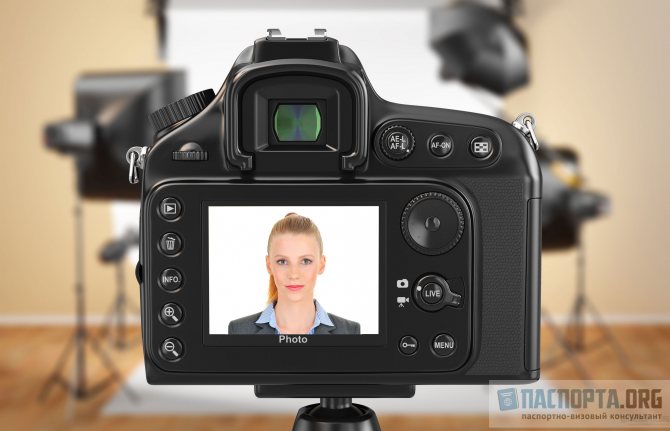
In addition, each country has its own special requirements, including the question of how many photographs are needed for a Schengen visa. For Austria, Germany, Italy, Poland, France, Switzerland and Liechtenstein, you should prepare 2 photos, one of which is attached to the application form, and the second is submitted separately.
Denmark, Norway, the Netherlands, Iceland require that the photo be taken no earlier than 3 months before the trip. It is almost impossible to verify this, but it is better to play it safe and fulfill this requirement.
You can familiarize yourself with the specific conditions for submitting a photo and the requirements for it on the website of the representative offices of the countries to which you are planning a trip, or at consulates, visa centers and embassies.
It is not recommended to submit a package of documents with an inappropriate photo, as there is almost a 100% chance of visa refusal. And if a negative response is received from the representative office of one of the Schengen countries, then, most likely, it will be difficult to obtain permission to enter other states from this bloc.
It is also recommended to take a separate photo when submitting biometric data directly at the consulate. Here they adhere to the same rules as when submitting a package of documents for a visa.
The photo parameters for a Schengen visa correspond in almost all respects to the general requirements for photographs for a citizen’s internal passport. Therefore, if you do it in a salon, you should simply inform about the purpose of receiving the product.
Photo quality
In addition to sizes, European countries check the quality of photographs.
The photo for a Schengen visa must meet the following parameters:
- Definition. Lighting should be uniform. Red eyes, glare, unnatural skin color, shadows are not allowed.
- Chroma. Photos that are too dark or light are not accepted by consulates and visa centers.
- Appearance. The face should be in frontal view and be completely open. The gaze should be directed only forward, and the eyes should be clearly visible. The mouth is closed, the nose is located in the center of the photo. Long hair should be kept back so as not to cover cheekbones, cheeks or forehead.
- Background. It is recommended to use gray or blue shades for the background. Some countries do not accept photos with a white back.
- Frames and corners are not allowed.
Additional Photo Guidelines
- The face is normal, a smile and an open mouth are not allowed;
- Hair should not be allowed to cover the face;
- Eyes wide, but naturally open, looking straight into the lens. The photographer must remove the red-eye effect (usually happens to those who wear lenses);
- The photograph is strictly from the front, it is forbidden to turn or tilt your head;
- Lack of shadows and highlights on the face;
- No frames or corners are allowed;
- Correct color correction has been performed: the skin should be of a normal shade;
- Uniform lighting throughout the photo;
- Scarves, large hairpins, and bright headbands are not acceptable;
- Girls: minimal makeup, simple, neat hairstyle. The bangs should be pinned up;
- If a person always wears glasses, do not take them off, but they must be ordinary, for vision correction (tinted ones are not allowed);
- Headwear is not allowed. Exception: religious beliefs. But the face should be as open as possible.
You may be interested in: Germany Visa Application
Appearance and lighting
The person's head should be positioned completely within the frame, without rotation or half-profile. She should be in the center, eyes open wide, looking at the camera. The face has the usual serious appearance, without a smile and an open mouth.
Brightly colored makeup is not allowed. It is allowed to slightly tint the lips and eyes, but you cannot use festive colors and makeup.
The hairstyle in the photo should be neat. For women, it is better to remove their hair and secure it with hairpins. Bright hair colors and extreme hairstyles can also be used as long as they do not cover the face and eyes. However, it is not recommended to use informal style and mohawks for photos.
Sudden changes in color, shadows on the face, and uneven lighting are not allowed. All of the listed requirements for the applicant’s appearance, as well as the size of the photo for a Schengen visa, must be met. Otherwise, your chances of getting a visa are reduced.
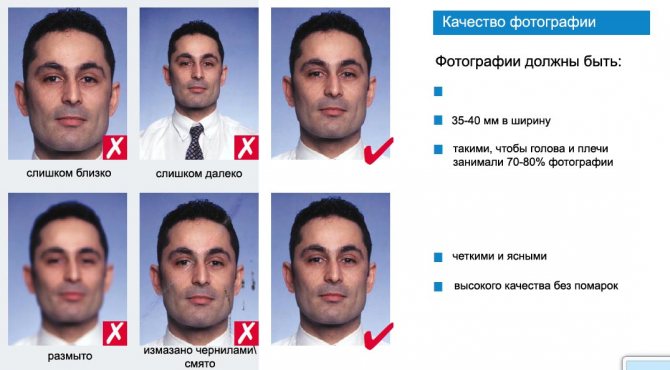
Samples of photographs for Schengen registration: what should and should not be taken
To understand which photograph fits the rules, it is useful to look at an example of how to take a photograph correctly and incorrectly.
Examples of photographs that meet established standards
We need images that meet ICAO standards.
Men's photos for Schengen visa:
- man with glasses;
- young man;
- with beard;
- elderly person.
Women's photos:
- Girl in glasses;
- girl in burqa;
- elderly woman;
- girl with long hair.
Photos of children:
- child;
- teenager.
Examples of photographs that were taken incorrectly
Common mistakes why photos for a Schengen visa are rejected:
- the light is not adjusted correctly;
- incorrectly selected glasses;
- there are foreign objects in the photograph that cover the face;
- several people;
- failure to comply with proportionality;
- the photo for obtaining a Schengen visa has a portrait style, there are emotions;
- poor quality frame.
Background and clothes
The requirements for the background of a photograph are the same in the consulates of all countries. The background should be lighter than the person’s skin, plain, but not white. It is recommended to use light gray tones for France, gray-blue for Finland, and light blue for the Czech Republic and Luxembourg.
The main requirement for a Schengen photo is a clear and complete image of the applicant’s face. Therefore, all items of clothing that interfere with full visibility must be removed. There are no special requirements for clothing, except that it should not be provocative or bright. Outerwear is also not allowed in the photo. A hood or high collar can cover part of a person’s face, so such clothing should also not be worn.
Head coverings are prohibited for travel photography in Europe unless prescribed by a doctor or worn for religious reasons. But in any case, they should not cover the face or shade.
Do you want to be guaranteed to obtain a residence permit, permanent residence, or citizenship in another country? See the rating of reliable migration companies!
Glasses and hats in the visa photo
Since the photograph for obtaining a Schengen visa must be absolutely neutral, glasses and hats have no place in it. This rule, however, has exceptions.
Glasses
If you always wear glasses, that is, you need them to correct your vision and not as decoration, you can leave them on for photography. However, they should not be:
- dark - sunglasses are prohibited for Schengen photos;
- too voluminous, since closing your eyes to take pictures is not allowed;
- overexposed - make sure that there are no glares on the glass in the final photo.
Hats
You can take a photograph for a Schengen visa wearing a headdress only if this is necessary due to the religious beliefs of the applicant. If you are going to take this type of photo, make sure that your clothing does not cover your face. It should be completely open along the forehead-chin line (but you can hide your hair under a headdress).
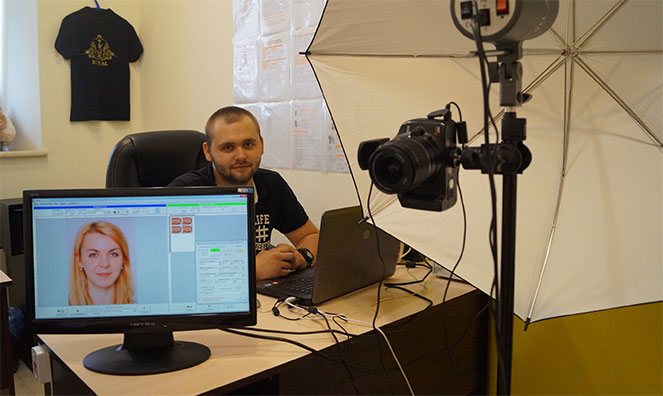
Availability of accessories
A visa to visit the Schengen zone does not imply the use of accessories and jewelry for photography. The person's appearance should be in a neutral business style. You should not wear sunglasses, jewelry in the form of shiny headbands, or hairpins.
As an exception, it is allowed to use glasses if they are prescribed for medical reasons for constant wear. But you cannot use models with wide frames and dark lenses that change color.
Attention! Ask your photo studio technician to check that there is no glare from the glasses, otherwise it will ruin the photo.
Paper photo size for online attachment
- The photo must have 3x4 proportions within the specified limits. The dimensions of the paper photo are 35x45 mm.
- The image dimensions are at least 240 pixels wide and 320 pixels high. A smaller picture will be rejected. For example, a photo with an aspect ratio of 235x320 pixels is not suitable.
- The image weight cannot exceed 120 KB.
- Image resolution is measured in DPI (dots per inch) and is used to control print quality. Therefore, higher resolution means better print quality. A photo for a visa to France must be at least 300 dpi, so when scanning the image you need to carefully check this parameter.
- The only acceptable image format is JPEG. Other image formats such as BMP, TIFF, GIF, PNG and the like will be rejected after warning.
Baby photos
Children also need permission to visit Schengen countries. It is issued in the same way as for an adult. The requirements for children's photographs must correspond to the characteristics of adult photographs. Foreign objects, toys, and hats are not allowed in the frame. A child’s face has different dimensions, unlike an adult’s, so when photographing, only two parameters are checked:
- Size 3.5 x 4.5 cm.
- The area of the face of the entire frame is 70-80%.
When photographing a child for a visa permit, deviation from the requirements is allowed. The oval of the face can be reduced to avoid shadows and distortions.

Requirements for photographs of children
The requirements for a child's photograph for a Schengen visa are the same as for adults, but there are additional clarifications.
- The child must be alone in the photo. Without adults and not in their arms.
- The child must look at the camera and his mouth must be closed.
- There should be no foreign objects in the frame: chair, toys, etc.
- Plain light background. No birch trees or Smeshariki trees in the background!
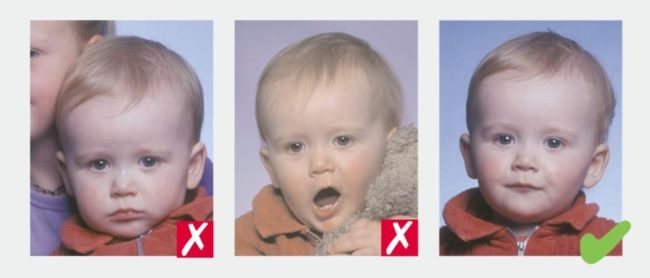
Where to take photos?
Consulates do not accept amateur footage of poor quality for applying for Schengen. You need to contact the following institutions:
- Professional photo studio. The master probably knows about all the subtleties and nuances associated with photographs for a Schengen permit. Therefore, you need to immediately say what the photo is for. When receiving the finished result, it is recommended to check the quality and compliance with the requirements.
- Visa centers. Schengen states establish visa centers. You can contact them for various services and document photography. Photography is carried out using special equipment.
- Consulates. They also have everything you need to take high-quality photos that meet the standards.
- Self-production. If you are a professional and have photography skills, you can do everything yourself. To do this, you will need a good camera, selection of the desired background, lighting and a high-quality printer. If it is not there, then printing services are not difficult to find in many organizations.
The number of photographs for a Schengen visa is determined by law and is equal to 1 piece. But in some countries, for example, Poland or Italy, they require 2 photos.
When applying for a permit to enter the Schengen countries in 2021, you must attach a photograph. It is subject to certain requirements, compliance with which is verified by consulates. If the photograph is taken with violations and does not comply with all the rules, then the applicant will be denied a visa. A photo that is too old is also not suitable, since it is impossible to identify a person from it.
General rules
The photograph attached to the application form submitted by the applicant for a Schengen visa must comply with the so-called ICAO (or ICAO) standards. In general, this abbreviation stands for International Civil Aviation Organization. The convention on it, also called the Chicago Convention, was adopted back in 1944 in the USA. 52 countries of the world took part in it. The ICAO standard is a special regulated and standard technical requirement that is applied to ensure the safety and regulation of all processes related to civil aviation. Photographs for documents, made in the same style, are also subject to the accepted convention and must be made according to the rules.

The visa photo must comply with ICAO standards
On a note! Embassies of different countries may have different visa photo requirements. But a number of photography rules are the same for most countries of the world.
Table. General requirements for photos.
| Parameter | Requirement |
| Statute of limitations | The photo must be taken recently; it is better to take a photo that is no more than 6 months old. |
| Accuracy | The photograph must not have stains, damage or breaks. |
| Quality | The best photo will be one taken by a professional. Photos from the family archive, even those taken on a white background, are not suitable. |
| Color matching | When photographing against a light background, it is recommended to wear dark clothing. |
| Chroma | Most consulates require color photographs. You should not experiment and make black and white, although in some cases this option is acceptable. |

Understanding the basic requirements
Attention! By attaching a bad and low-quality photo to the Schengen application form, a person risks being denied permission to travel to other countries.
You also need to familiarize yourself with a number of other rules and requirements that apply to photographs for a Schengen visa. It is recommended to know them in order to avoid making mistakes when ordering and making photos - even professionals can make a mistake and make the wrong card.
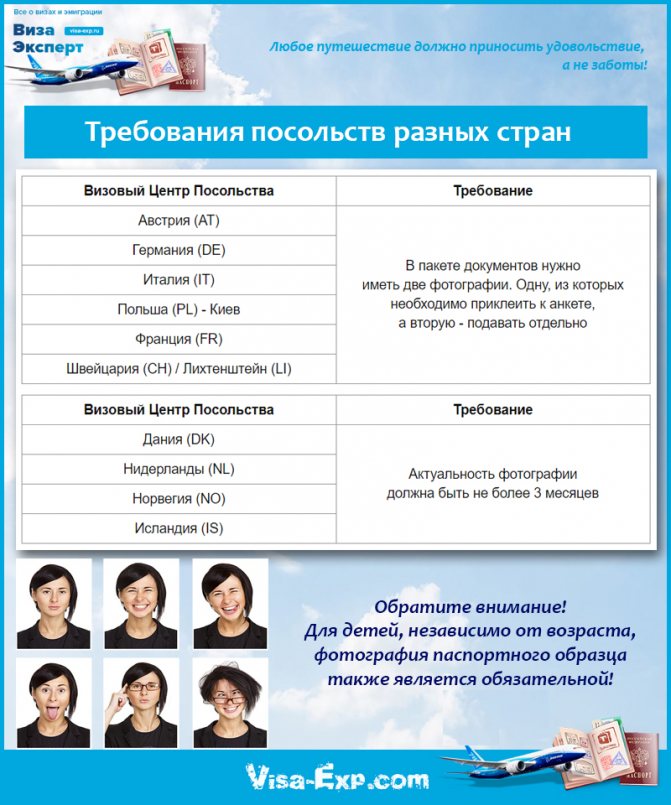
Requirements of embassies of different countries
